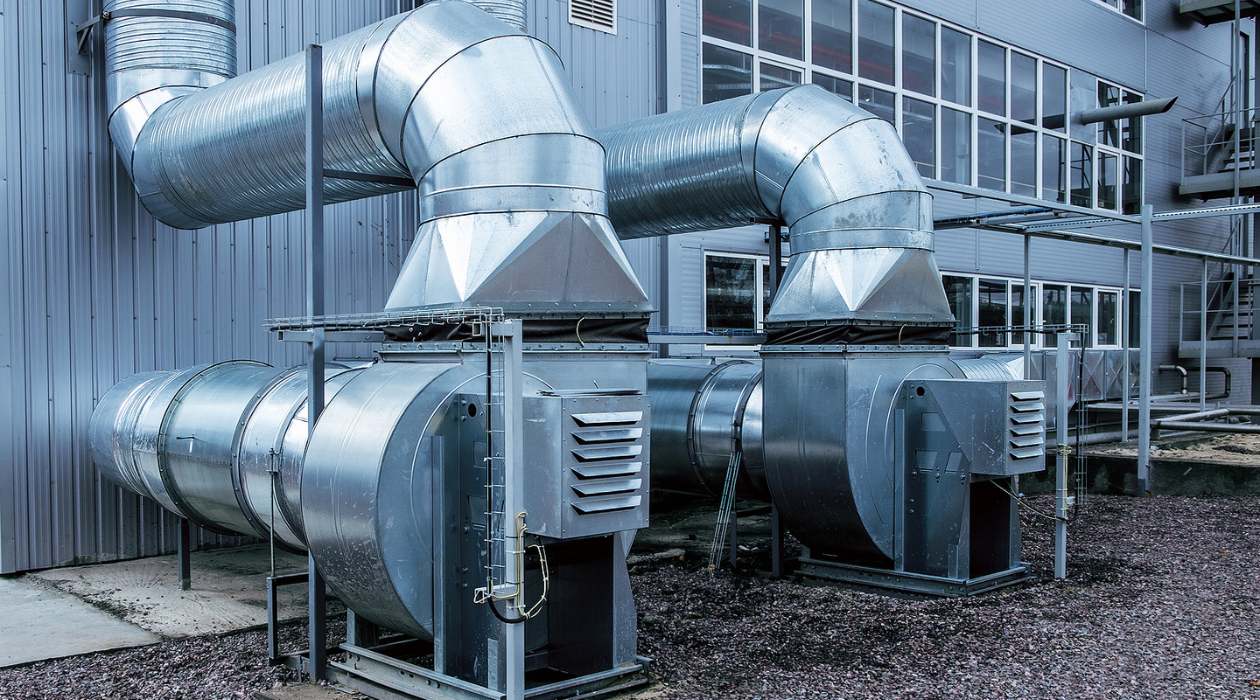

Articles
What Is HVAC Ductwork
Modified: January 8, 2024
Discover everything you need to know about HVAC ductwork in our informative articles. Gain insights on installation, maintenance, and repair for optimal indoor air quality.
(Many of the links in this article redirect to a specific reviewed product. Your purchase of these products through affiliate links helps to generate commission for Storables.com, at no extra cost. Learn more)
Introduction
When it comes to heating, ventilation, and air conditioning (HVAC) systems, there are many components that work together to ensure optimal comfort and air quality in both residential and commercial spaces. One of the key elements of an HVAC system is the ductwork. HVAC ductwork plays a crucial role in distributing conditioned air throughout the building.
In this article, we will explore the definition, purpose, components, types, design considerations, installation importance, signs of potential problems, benefits of maintenance, and cleaning and maintenance tips for HVAC ductwork.
Whether you are a homeowner, business owner, or HVAC professional, understanding the basics of HVAC ductwork is essential in maintaining a comfortable and efficient indoor environment. So let’s dive in and explore the fascinating world of HVAC ductwork.
Key Takeaways:
- Properly designed and maintained HVAC ductwork is essential for efficient airflow, balanced temperature distribution, and improved indoor air quality, ensuring comfort and energy efficiency in residential and commercial spaces.
- Regular inspection, cleaning, and maintenance of HVAC ductwork are crucial for preventing potential issues, improving energy efficiency, and extending the lifespan of the entire HVAC system, providing clean, healthy indoor air for occupants.
Read more: How To Remove HVAC Ductwork
Definition and Purpose of HVAC Ductwork
HVAC ductwork can be defined as a system of pipes or conduits that transport conditioned air (heated or cooled) from the HVAC unit or system to the different areas of a building. It is responsible for delivering the treated air to various rooms or zones and returning the stale air back to the HVAC system for reconditioning.
The main purpose of HVAC ductwork is to ensure efficient and effective air distribution throughout the building. It acts as a pathway for the airflow, allowing the HVAC system to deliver the desired temperature and air quality to each space. Without ductwork, the conditioned air would not be able to reach the intended areas, resulting in uneven temperature distribution and discomfort.
In addition to distributing air, HVAC ductwork also plays a crucial role in maintaining indoor air quality. It helps to remove pollutants, such as dust, allergens, and odors, from the living or working spaces by circulating the air through filters. This filtration process helps to remove impurities, ensuring a cleaner and healthier indoor environment.
Another purpose of HVAC ductwork is to regulate the airflow and maintain the system’s efficiency. Properly designed and installed ductwork ensures that the airflow is balanced throughout the building, preventing air pressure imbalances, temperature inconsistencies, and noise. It also helps to minimize energy wastage by ensuring that the conditioned air is efficiently distributed, reducing the workload on the HVAC system.
Overall, the primary functions of HVAC ductwork can be summarized as:
- Transporting conditioned air to different areas of the building
- Returning stale air back to the HVAC system for reconditioning
- Ensuring even temperature distribution and comfort
- Promoting indoor air quality by removing pollutants
- Regulating airflow and maintaining system efficiency
Understanding the definition and purpose of HVAC ductwork is vital in comprehending its role in the overall operation of an HVAC system. In the following sections, we will delve into the various components, types, design considerations, installation importance, maintenance, and more aspects related to HVAC ductwork.
Components of HVAC Ductwork
HVAC ductwork is comprised of several components that work together to ensure proper airflow and distribution of conditioned air. Understanding these components is important for designing, installing, and maintaining an efficient ductwork system. Let’s take a closer look at the key components of HVAC ductwork:
- Air Supply Plenum: The air supply plenum is the chamber where the conditioned air enters the ductwork system. It is typically connected to the HVAC unit or air handler and serves as the starting point for the airflow distribution.
- Ducts: Ducts are the main conduits that transport the conditioned air from the air supply plenum to different areas of the building. They are typically made of sheet metal, fiberglass, or flexible materials. Ducts can be rectangular, round, or oval-shaped, depending on the design requirements.
- Dampers: Dampers are movable plates or valves installed within the ductwork to control the airflow. They are used to regulate the amount of air entering each zone or room, allowing for individual temperature control and energy efficiency.
- Air Registers: Air registers, also known as grilles or diffusers, are the visible components of the ductwork system. They are placed in the walls, floors, or ceilings to distribute the conditioned air into the occupied space. Air registers come in various shapes, sizes, and designs to provide air diffusion and aesthetic appeal.
- Return Air Ducts: Return air ducts are responsible for collecting the stale air from different spaces and returning it to the HVAC system for reconditioning. They help maintain a balanced airflow by removing the air that has been circulated throughout the building.
- Air Filters: Air filters are essential components that remove dust, allergens, and other particles from the incoming air. They help maintain indoor air quality by trapping pollutants before they can enter the living or working spaces. Regular filter replacement or cleaning is necessary to ensure optimal performance.
- Duct Insulation: Duct insulation is used to prevent heat gain or loss within the ductwork. It helps maintain the temperature of the conditioned air as it travels through unconditioned spaces, such as attics or crawl spaces. Insulated ducts also help reduce energy loss and minimize condensation issues.
- Ductwork Supports and Hangers: To ensure the stability and proper installation of the ductwork, supports and hangers are used. They secure the ducts to the building’s structure, preventing sagging or movement that could hinder airflow.
- Sealing Materials: Properly sealing the joints, connections, and seams of the ductwork is crucial for preventing air leaks. Mastic sealant, foil tape, or specialized duct sealing materials are used to ensure an airtight system, optimizing energy efficiency.
These are the primary components of HVAC ductwork. Each component serves a specific purpose in ensuring the efficient and effective distribution of conditioned air throughout the building. When designing or maintaining an HVAC ductwork system, it is essential to pay attention to the quality, sizing, installation, and sealing of these components to achieve optimal system performance.
Types of HVAC Ductwork
HVAC ductwork comes in various types, and selecting the right type depends on factors such as space availability, budget, and design requirements. Each type of ductwork has its own advantages and considerations. Let’s explore some common types of HVAC ductwork:
- Sheet Metal Ducts: Sheet metal ducts are made of galvanized steel, aluminum, or stainless steel. They are known for their durability and can withstand high temperatures. Sheet metal ductwork is commonly used in commercial buildings and is suitable for large-scale projects due to its rigid construction. It can be fabricated into various shapes, including rectangular, round, and oval, to accommodate different design requirements.
- Fiberglass Ducts: Fiberglass ductwork is made of insulated panels or boards composed of fiberglass and resin. These ducts are lightweight, easy to install, and have excellent thermal insulation properties. Fiberglass ducts are often used in residential buildings and provide good energy efficiency. They are also resistant to moisture and help reduce condensation issues. However, proper sealing is essential to prevent air leaks and maintain optimal performance.
- Flexible Ducts: Flexible ducts, also known as flex ducts, are made of a combination of plastic and metal spiral wire. They are highly flexible and can be easily routed around obstacles, making them suitable for retrofit projects or areas with limited space. Flexible ducts are cost-effective and easy to install. However, they can be prone to kinking or sagging, which can restrict airflow if not installed correctly.
- Duct Board: Duct board ductwork is made of fiberglass panels covered with a foil facing. It provides excellent thermal and acoustical insulation properties. Duct board is lightweight and can be easily cut and shaped to fit the design requirements. It is commonly used in residential applications and is suitable for small to medium-sized projects. Proper sealing of the joints is necessary to prevent air leaks.
- Rigid Fiber Insulation Ducts: Rigid fiber insulation ducts are made of rigid insulation materials, such as fiberglass, mineral wool, or cellulose. They come in prefabricated panels or sections that are assembled and sealed together. These ducts provide excellent thermal insulation and are resistant to fire. Rigid fiber insulation ducts are commonly used in commercial and industrial buildings that require high thermal performance and fire safety.
Each type of ductwork has its own advantages and considerations. It is important to choose the appropriate type based on factors such as space constraints, cost, insulation properties, and design requirements. Consulting with HVAC professionals can help determine the best type of ductwork for a specific project.
Additionally, it is crucial to ensure proper installation and sealing of the ductwork regardless of the type chosen. Proper sealing minimizes air leaks and ensures optimal energy efficiency. Regular inspection and maintenance of ductwork are also necessary to identify and address any issues that may arise, such as damage or deterioration over time.
Understanding the different types of HVAC ductwork allows for informed decision-making when it comes to designing, installing, or upgrading ductwork systems. It ensures that the chosen type suits the specific needs of the building and contributes to reliable and efficient airflow distribution.
Factors to Consider in HVAC Ductwork Design
Proper design of HVAC ductwork is crucial for ensuring efficient and effective airflow distribution, as well as maintaining the comfort and energy efficiency of a building. Several factors should be considered when designing HVAC ductwork. Let’s explore some key factors that play a significant role in the design process:
- Building Size and Layout: The size and layout of the building are essential considerations in ductwork design. The square footage of the space, the number of rooms or zones, and the height of the ceilings all affect the sizing and distribution of ducts. Understanding the layout and utilization of the building helps determine the most efficient routing of the ductwork to ensure even airflow.
- Heating and Cooling Load: The heating and cooling load of the building is another critical factor in ductwork design. The load calculations consider factors such as insulation, windows, occupancy, and climate, among others. Determining the heating and cooling load helps in selecting the appropriate duct size and air velocity to achieve the desired temperature and comfort level in each space.
- Duct Sizing: Proper sizing of the ductwork is vital to maintain a balanced airflow and minimize pressure losses. The size of the ducts should be determined based on the airflow requirements and the resistance of the system. Oversized ducts can result in decreased air velocity and reduced efficiency, while undersized ducts can lead to increased noise, pressure drops, and poor airflow.
- Airflow Distribution: Achieving proper airflow distribution is essential to maintain comfort in each space. The design should consider factors such as the location and size of supply and return air registers, as well as the placement of dampers to control airflow to different zones or rooms. Balancing the airflow ensures even temperature distribution and minimizes hot or cold spots.
- Noise Control: HVAC ductwork design should also take into account noise control measures. Noise generated by the airflow, equipment, or duct vibrations can be disruptive and affect occupant comfort. Proper duct insulation, acoustic lining, and the use of noise attenuators can help reduce noise transmission and create a quieter indoor environment.
- Maintainability and Accessibility: Designing ductwork with maintenance and accessibility in mind is essential for future repairs or upgrades. Providing access panels, adequate clearance for technicians, and proper labeling of ducts and components facilitate routine maintenance and troubleshooting tasks.
- Local Building Codes and Regulations: Compliance with local building codes and regulations is crucial in HVAC ductwork design. It ensures the safety and performance of the system and prevents any legal issues. Familiarity with local codes and regulations helps ensure proper ductwork design and installation.
Considering these factors during the design phase helps create an efficient, balanced, and effective HVAC ductwork system. Working with experienced HVAC professionals or consulting reputable HVAC engineering firms can ensure that these factors are properly addressed, resulting in a well-designed ductwork system that meets the specific requirements of the building.
Remember, proper ductwork design sets the foundation for a functional and reliable HVAC system, providing comfort, energy efficiency, and indoor air quality for the occupants of a building.
When installing HVAC ductwork, make sure to seal all joints and connections properly to prevent air leaks and ensure efficient airflow throughout the system. Proper sealing can also help improve indoor air quality and reduce energy costs.
Read more: Where To Buy HVAC Ductwork
Importance of Proper HVAC Ductwork Installation
The installation of HVAC ductwork is a critical step that significantly impacts the overall performance and efficiency of an HVAC system. Proper installation ensures that the ductwork functions effectively, delivers conditioned air efficiently, and promotes optimal comfort in the building. Let’s explore the key reasons why proper HVAC ductwork installation is so important:
- Efficient Airflow: Properly installed ductwork ensures smooth and efficient airflow throughout the building. It minimizes resistance and pressure drops, allowing the conditioned air to reach its intended destinations with minimal disruption. This efficient airflow helps maintain even temperature distribution and prevents hot or cold spots in the building.
- Energy Efficiency: The installation quality of HVAC ductwork directly affects the energy efficiency of the system. Air leaks, poorly sealed joints, or improperly insulated ducts can result in significant energy losses. Proper installation ensures airtight duct connections, adequate insulation, and minimal air leakage, reducing energy waste and saving money on utility bills.
- Noise Reduction: Properly installed ductwork helps minimize noise transmission within the HVAC system. Incorrectly installed ducts can cause rattling, vibrations, or airflow noise. Proper insulation, secure hangers and supports, and careful sealing of connections contribute to a quieter HVAC system and a more comfortable indoor environment.
- Optimal Air Quality: The installation of HVAC ductwork impacts indoor air quality. Poorly installed or damaged ducts can introduce contaminants, such as dust, allergens, and mold spores, into the living or working spaces. Proper installation ensures that the ducts are free from leaks and properly sealed, preventing the infiltration of pollutants and maintaining a healthier indoor environment.
- System Performance: Proper ductwork installation is essential for maximizing the performance of the entire HVAC system. Well-designed and correctly installed ducts allow the HVAC equipment to operate at its optimal capacity and efficiency. If the ductwork is improperly sized or installed, the HVAC system may struggle to deliver the desired temperature, leading to inefficiencies, increased wear on equipment, and potential breakdowns.
- Longevity: Proper installation of HVAC ductwork contributes to the longevity and durability of the system. When ductwork is installed correctly, it reduces stress on the HVAC equipment, prevents premature wear, and extends the lifespan of the system components. Additionally, well-installed ducts are less prone to damage or deterioration, reducing the need for costly repairs or replacements in the future.
- Compliance with Codes and Standards: Proper installation ensures compliance with building codes and industry standards. Building codes and regulations specify requirements for ductwork installation, such as fire safety, insulation, and access. By adhering to these codes, you can avoid potential legal issues, ensure the safety of the occupants, and maintain the value of the property.
Overall, proper installation of HVAC ductwork is essential for the overall performance, efficiency, and longevity of the HVAC system. Working with experienced HVAC contractors who follow industry best practices and guidelines ensures that the ductwork is installed correctly, providing optimal airflow, energy efficiency, and comfort for the occupants of the building. Investing in proper installation upfront saves time, money, and headaches down the line.
Signs of Potential HVAC Ductwork Problems
HVAC ductwork plays a crucial role in maintaining a comfortable and efficient indoor environment. However, over time, ductwork can develop issues that impact the performance and efficiency of the HVAC system. It’s important to be aware of the signs that indicate potential problems with the ductwork. Here are some common signs to watch out for:
- Poor Airflow: Reduced or uneven airflow from the air registers can be a sign of ductwork problems. It may indicate blockages, leaks, or improperly sized ducts. If certain rooms in the building are consistently warmer or colder than others, it could be a sign of airflow imbalance due to ductwork issues.
- Inconsistent Temperature: If you notice significant temperature differences between different areas of the building, it may indicate ductwork problems. Leaks or poorly insulated ducts can result in heat loss or gain, leading to inconsistent temperatures and discomfort.
- Noisy Ducts: Unusual noises, such as rattling, banging, or whistling sounds coming from the ductwork, can indicate problems. Loose or damaged ducts, poorly secured hangers or supports, or obstructions in the ducts can cause these noises.
- Increased Energy Bills: A sudden increase in energy bills without a change in usage patterns may be a sign of ductwork problems. Leaky or poorly sealed ducts allow conditioned air to escape, forcing the HVAC system to work harder and consume more energy to maintain the desired temperature.
- Dust Accumulation: Excessive dust accumulation around the air registers or on surfaces can be a sign of ductwork problems. Leaky ducts can pull in dust, allergens, and pollutants from unconditioned spaces, resulting in poor indoor air quality.
- Visible Leaks or Damage: Inspect the visible sections of the ductwork for any signs of leaks, disconnected joints, or damage. Look for loose or detached duct connections, improper seals, or visible holes or gaps in the ducts.
- Condensation or Mold Growth: Excessive condensation on the ductwork or visible mold growth around the air registers may indicate ductwork problems. Poor insulation or excessive humidity levels within the ducts can lead to condensation or mold growth, potentially affecting indoor air quality.
- Foul Odors: Lingering musty or foul odors coming from the air registers can be a sign of mold or mildew growth within the ductwork. If the odors persist even after cleaning or changing the filters, it may indicate ductwork issues.
If you notice any of these signs indicating potential ductwork problems, it’s important to address the issues promptly. Consult with HVAC professionals who can thoroughly inspect the ductwork, identify any problems, and provide appropriate solutions. Regular maintenance and inspections of the ductwork can help identify and resolve issues early, ensuring optimal performance and energy efficiency of the HVAC system.
Remember, a well-functioning ductwork system is essential for maintaining comfort, indoor air quality, and energy efficiency in your home or building.
Benefits of Maintaining HVAC Ductwork
Maintaining HVAC ductwork is essential for ensuring the optimal performance, efficiency, and longevity of the entire HVAC system. Regular maintenance helps prevent issues with the ductwork that could result in discomfort, energy wastage, or costly repairs. Let’s explore the key benefits of maintaining HVAC ductwork:
- Improved Energy Efficiency: Properly maintained ductwork promotes energy efficiency by minimizing air leaks and ensuring proper airflow. Sealing any leaks or gaps in the ducts helps prevent conditioned air from escaping and reduces the workload on the HVAC equipment. This results in reduced energy consumption and lower utility bills.
- Enhanced Indoor Air Quality: Regular maintenance of the ductwork includes cleaning or replacing air filters, which significantly improves indoor air quality. Clean filters trap dust, allergens, and other airborne particles, preventing them from circulating throughout the building. This is especially important for individuals with respiratory conditions or allergies.
- Consistent Comfort: Well-maintained ductwork ensures even airflow distribution, resulting in consistent comfort across all areas of the building. Properly sealed and insulated ducts prevent hot or cold spots, providing a comfortable indoor environment throughout the year.
- Extended Equipment Lifespan: Maintaining the ductwork helps prolong the lifespan of the HVAC equipment. Clean and well-maintained ducts minimize strain on the system, reducing the risk of breakdowns, wear and tear, and premature equipment failure. This saves money on costly repairs or the need for premature equipment replacement.
- Noise Reduction: Regular maintenance includes inspecting and securing the hangers, supports, and connections of the ductwork. This helps eliminate any loose components or vibrations that may contribute to excess noise. Properly maintained ductwork results in a quieter HVAC system and a more peaceful indoor environment.
- Prevention of Mold and Mildew Growth: Moisture can accumulate within the ductwork, leading to the growth of mold and mildew. Regular maintenance includes cleaning and inspecting the ducts for any signs of moisture or mold growth. Addressing these issues promptly helps maintain a healthy indoor environment and prevents potential respiratory health problems.
- Identification of Potential Issues: During routine maintenance, HVAC professionals can identify and address potential issues with the ductwork before they escalate. This includes identifying leaks, damaged insulation, or failing components. Early detection and repair prevent further damage, ensuring the ductwork operates at its optimal capacity.
- Compliance with Building Codes and Regulations: Regular maintenance of the ductwork ensures compliance with building codes and regulations. Inspections and maintenance help identify any non-compliance issues and ensure that the ductwork meets safety and performance requirements.
By investing in regular maintenance of the HVAC ductwork, you can enjoy these benefits and maintain a comfortable, efficient, and healthy indoor environment. It is recommended to schedule professional HVAC maintenance on a regular basis to ensure the optimal functioning of the entire HVAC system, including the ductwork.
Remember, proper maintenance of HVAC ductwork is an investment in the longevity and performance of your HVAC system, providing comfort and energy efficiency for years to come.
Cleaning and Maintenance of HVAC Ductwork
Cleaning and maintenance of HVAC ductwork is crucial for ensuring the optimal performance, energy efficiency, and indoor air quality of the entire HVAC system. Regular maintenance helps prevent the buildup of dirt, dust, allergens, and other contaminants within the ducts, ensuring clean and healthy air in the living or working spaces. Here are some key steps to consider for cleaning and maintaining HVAC ductwork:
- Regular Inspection: Schedule routine inspections of the ductwork to identify any signs of damage, leaks, or mold growth. Look for loose or disconnected duct connections, damaged insulation, or visible dirt and dust accumulation.
- Change or Clean Air Filters: Regularly change or clean the air filters in the HVAC system. Dirty filters restrict airflow and reduce the system’s efficiency. Follow manufacturer guidelines for filter replacement or cleaning frequency.
- Clean Air Registers: Remove and clean the air registers regularly. Use a vacuum cleaner or damp cloth to remove any dust or debris that may accumulate on the registers and grilles. Ensure the air registers are properly aligned and not obstructed by furniture or curtains.
- Duct Cleaning: Consider professional duct cleaning services every 3 to 5 years, or as needed. Professional cleaners use specialized equipment to remove dust, dirt, and other contaminants from the ducts. This helps improve indoor air quality and prevent the circulation of pollutants throughout the building.
- Seal Air Leaks: Inspect the ductwork for any visible leaks or gaps. Use mastic sealant or metal-backed tape to seal any leaks, ensuring proper air circulation and preventing energy wastage. Avoid using duct tape, as it tends to deteriorate quickly.
- Insulate Ductwork: Ensure the ductwork is properly insulated, especially for ducts in unconditioned spaces. Insulation helps prevent heat gain or loss, improves energy efficiency, and reduces condensation issues. Insulate the ducts using foam insulation sleeves or wrap them with insulation blankets.
- Keep Ductwork Clear: Ensure that the area around the ductwork is clear of any obstructions, debris, or stored items. Obstructed ducts can restrict airflow and lead to inefficiencies in the HVAC system.
- Maintain HVAC System: Regularly maintain the HVAC system as a whole. Schedule professional maintenance service to clean and inspect the components of the system, including the blower motor, coils, and condensate drain pan. A well-maintained system ensures optimal performance and minimizes the need for duct cleaning.
It is important to note that while regular maintenance and cleaning are beneficial, not all situations require professional duct cleaning. If there are no significant signs of contamination or issues with indoor air quality, routine maintenance may be sufficient to keep the ductwork in good condition.
Consulting with HVAC professionals can provide guidance on the appropriate cleaning and maintenance schedule for your specific HVAC system and ductwork. They can ensure that the cleaning and maintenance procedures follow industry best practices and guidelines.
By implementing a regular cleaning and maintenance routine for the HVAC ductwork, you can enjoy improved indoor air quality, energy efficiency, and the longevity of your HVAC system.
Read more: How To Run HVAC Ductwork
Conclusion
HVAC ductwork is a critical component of the heating, ventilation, and air conditioning system that plays a vital role in maintaining comfort, indoor air quality, and energy efficiency in residential and commercial spaces. Understanding the ins and outs of HVAC ductwork is essential for homeowners, business owners, and HVAC professionals alike.
In this article, we have explored various aspects of HVAC ductwork, starting from its definition and purpose. We have discussed the key components that make up the ductwork system, including the air supply plenum, ducts, dampers, air registers, return air ducts, air filters, duct insulation, supports, and sealing materials.
Furthermore, we have examined different types of HVAC ductwork, such as sheet metal ducts, fiberglass ducts, flexible ducts, duct board, and rigid fiber insulation ducts, each with its unique advantages and considerations.
We have also highlighted the factors to consider in HVAC ductwork design, including building size and layout, heating and cooling load, duct sizing, airflow distribution, noise control, maintainability and accessibility, as well as local building codes and regulations.
Moreover, we have emphasized the importance of proper HVAC ductwork installation to ensure efficient airflow, energy efficiency, indoor air quality, system performance, and longevity. Signs of potential ductwork problems, such as poor airflow, inconsistent temperature, noise, increased energy bills, dust accumulation, visible leaks or damage, condensation, and foul odors, were also discussed.
Additionally, we have outlined the benefits of maintaining HVAC ductwork, including improved energy efficiency, enhanced indoor air quality, consistent comfort, extended equipment lifespan, noise reduction, prevention of mold and mildew growth, identification of potential issues, and compliance with building codes and regulations.
Lastly, we have highlighted the importance of cleaning and maintaining HVAC ductwork, including regular inspection, changing or cleaning air filters, cleaning air registers, duct cleaning, sealing air leaks, insulating ductwork, keeping ductwork clear, and maintaining the HVAC system as a whole.
In conclusion, understanding, designing, and maintaining HVAC ductwork are crucial in ensuring the optimal performance, efficiency, and comfort of the entire HVAC system. By paying attention to the design, installation, cleaning, and maintenance of ductwork, building occupants can enjoy clean, healthy indoor air and energy-efficient operation, while extending the lifespan of their HVAC equipment.
Whether you are a homeowner looking to improve the comfort of your living spaces or a business owner seeking to optimize the indoor environment for your employees and customers, investing in proper HVAC ductwork knowledge, design, installation, and maintenance is essential for a successful and efficient HVAC system.
Frequently Asked Questions about What Is HVAC Ductwork
Was this page helpful?
At Storables.com, we guarantee accurate and reliable information. Our content, validated by Expert Board Contributors, is crafted following stringent Editorial Policies. We're committed to providing you with well-researched, expert-backed insights for all your informational needs.
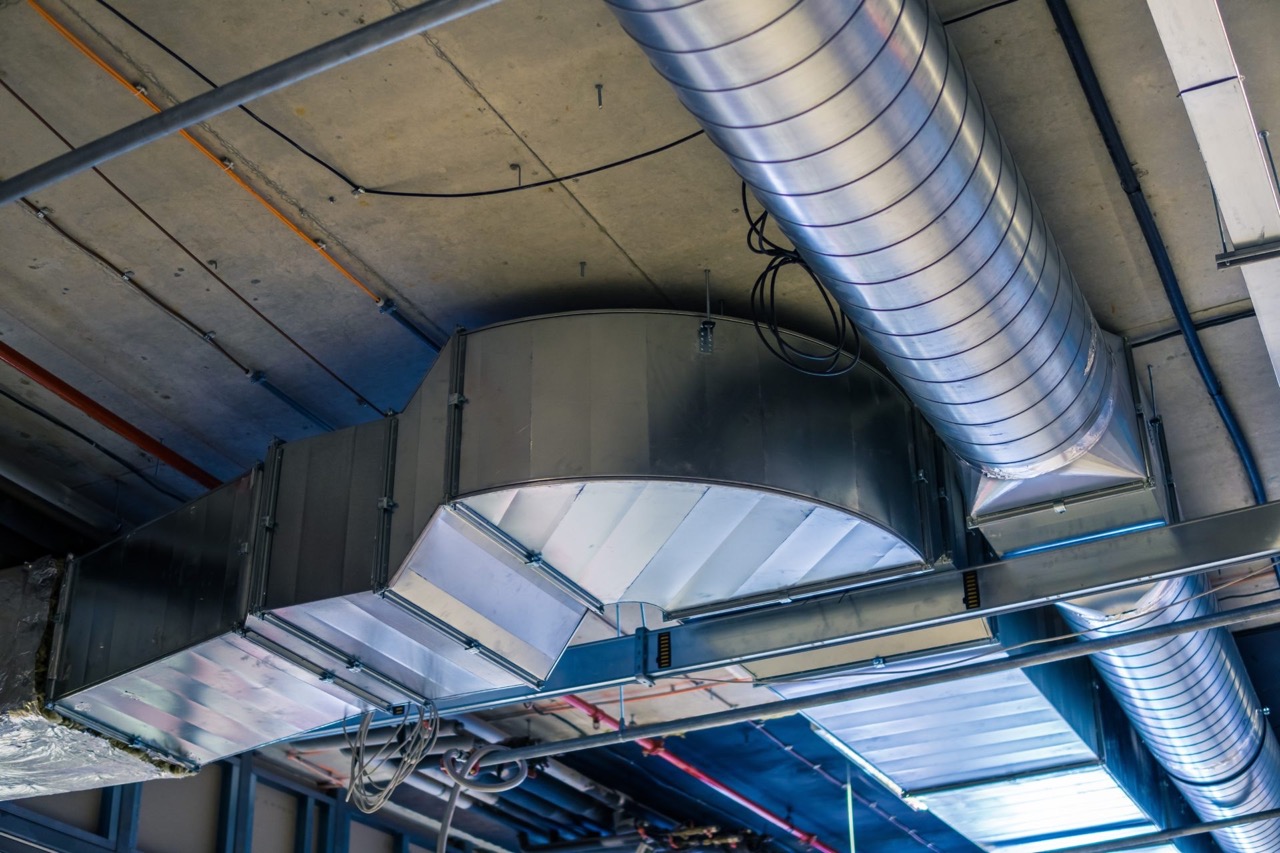
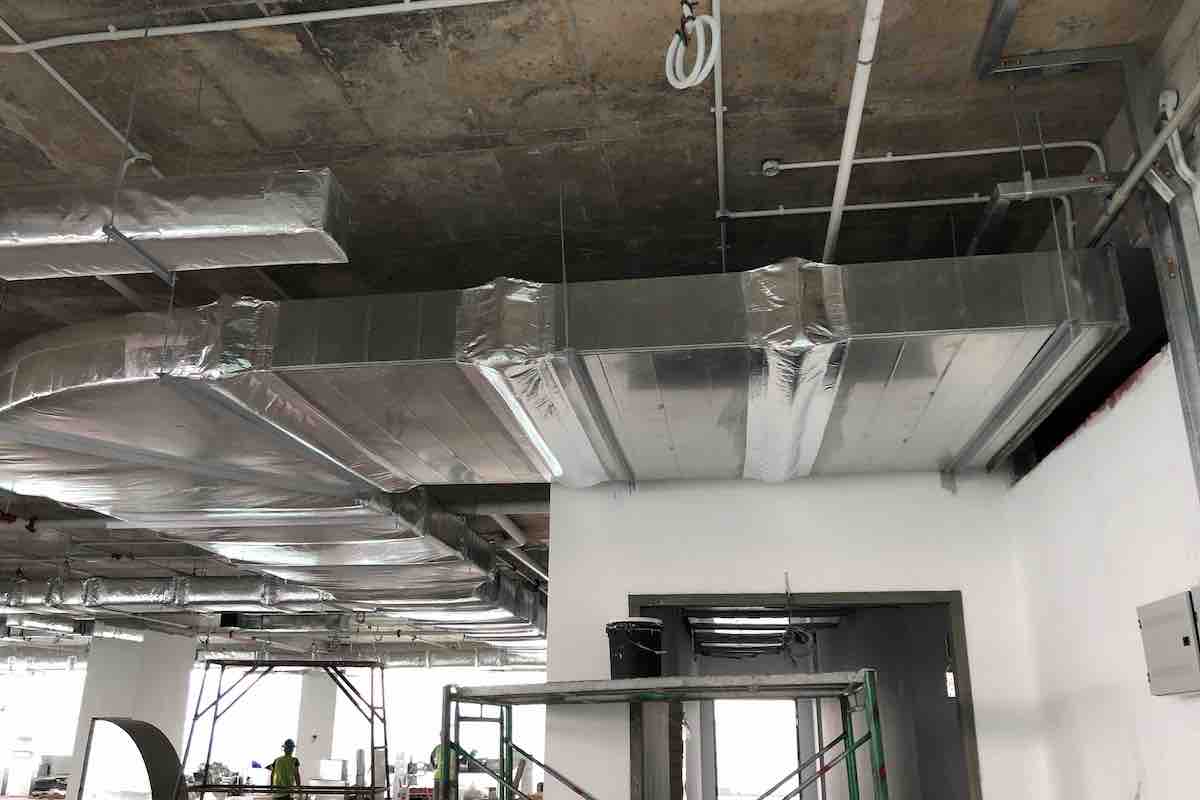
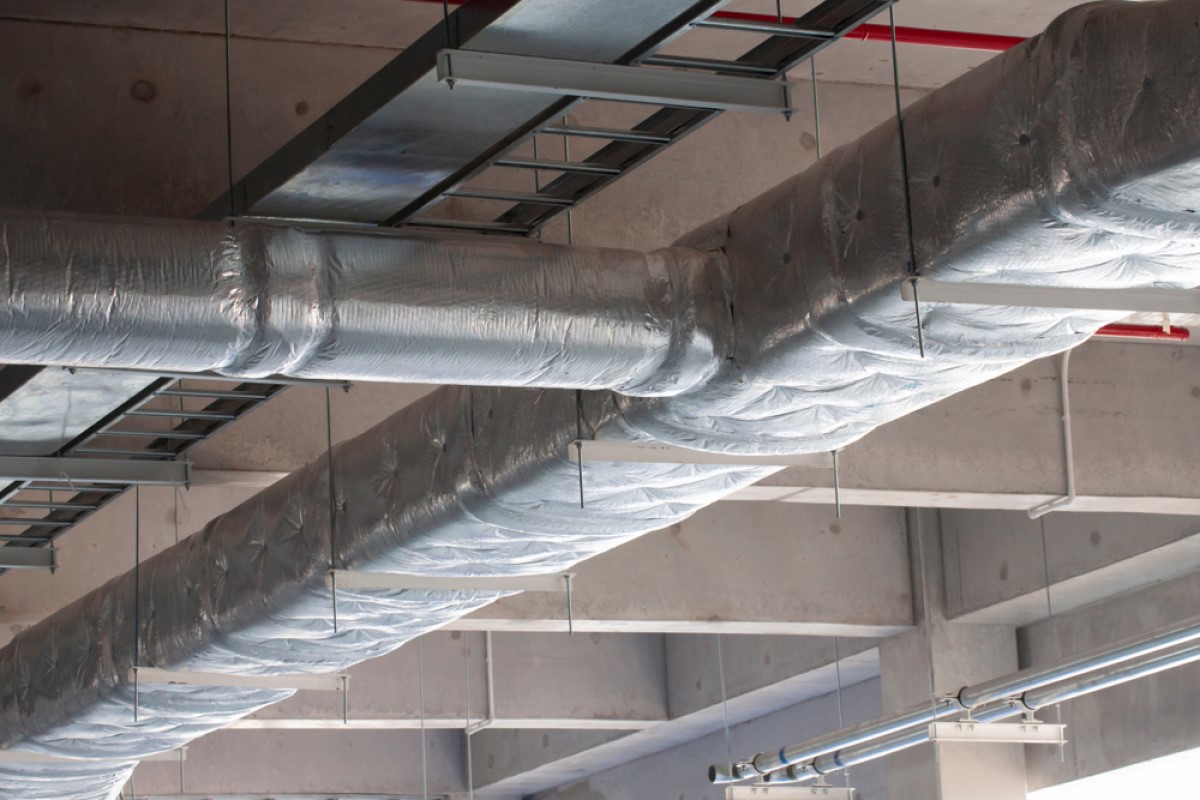
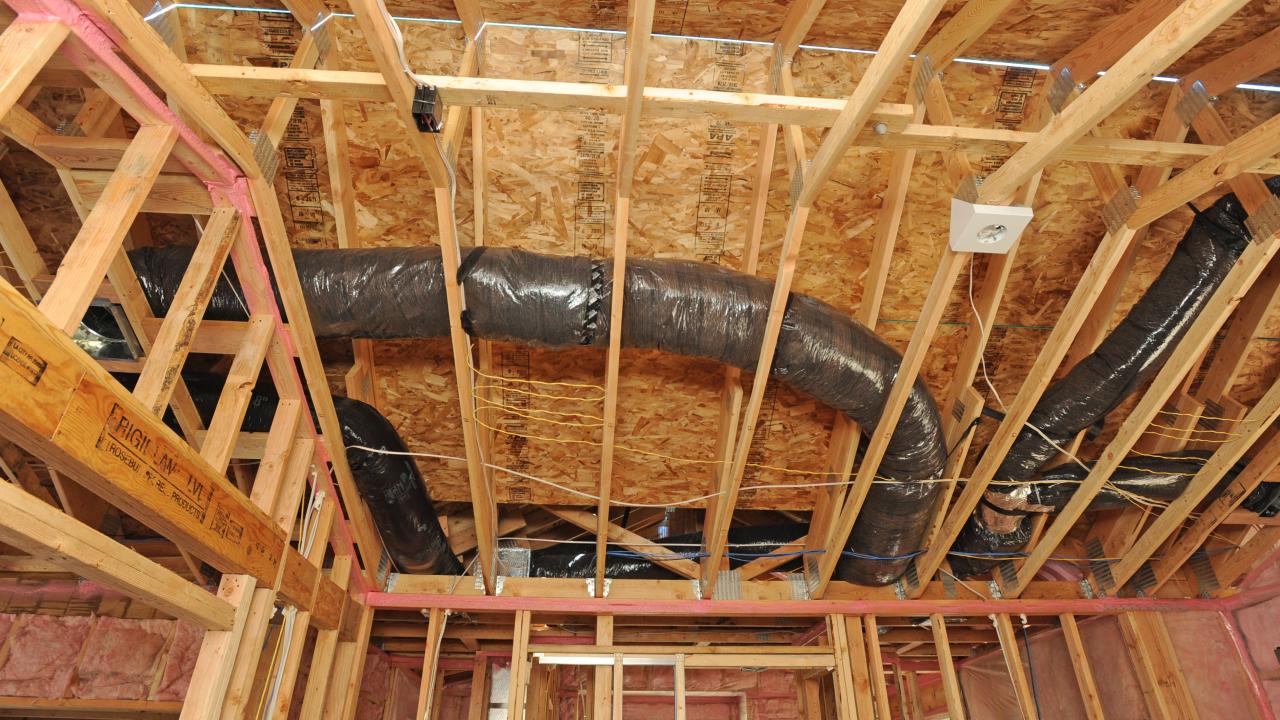

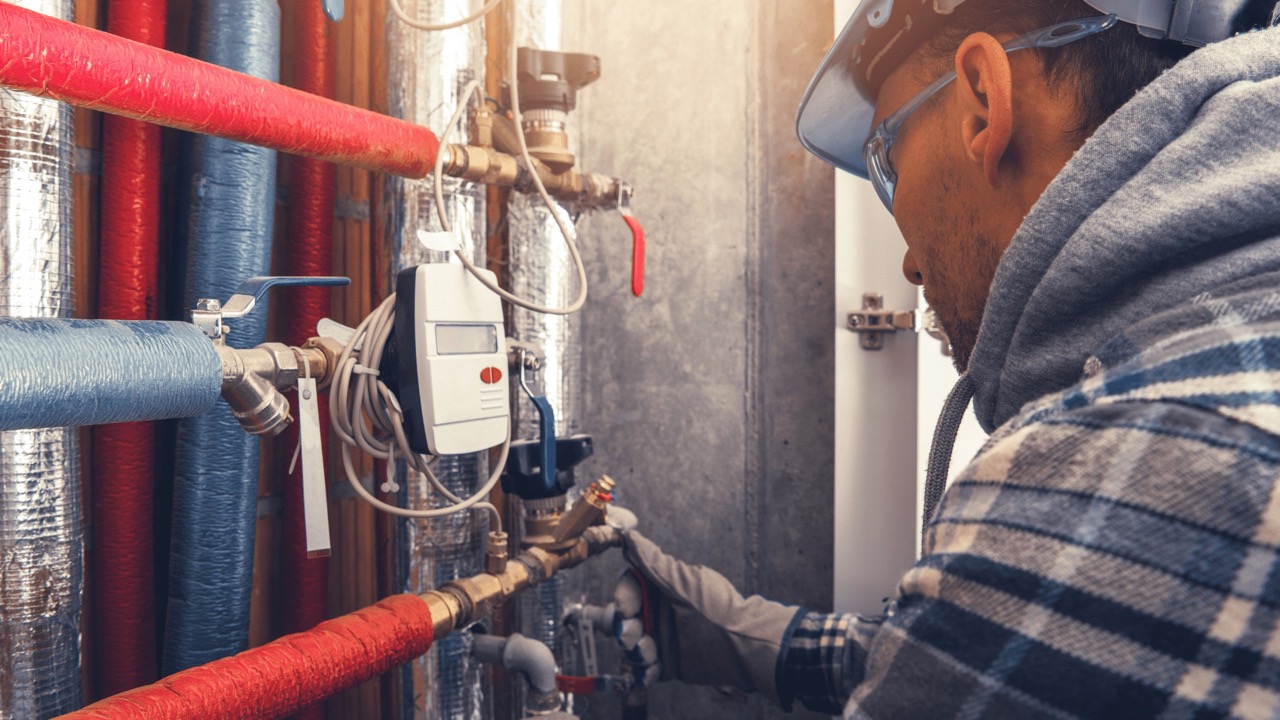
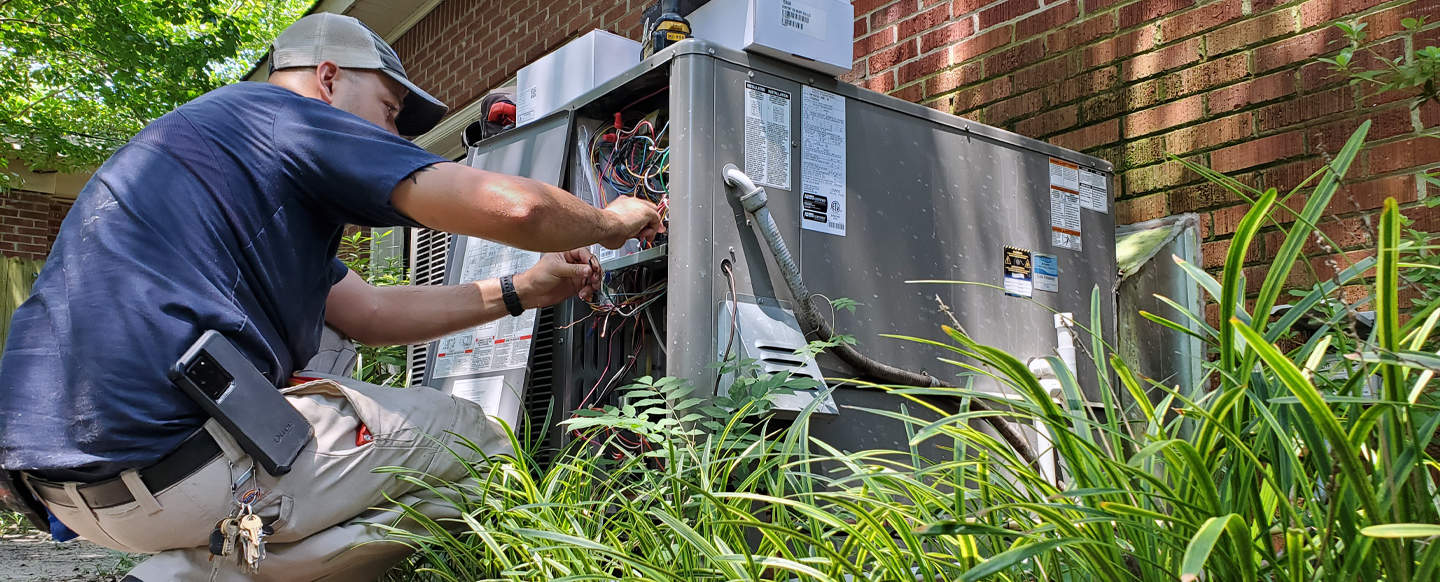
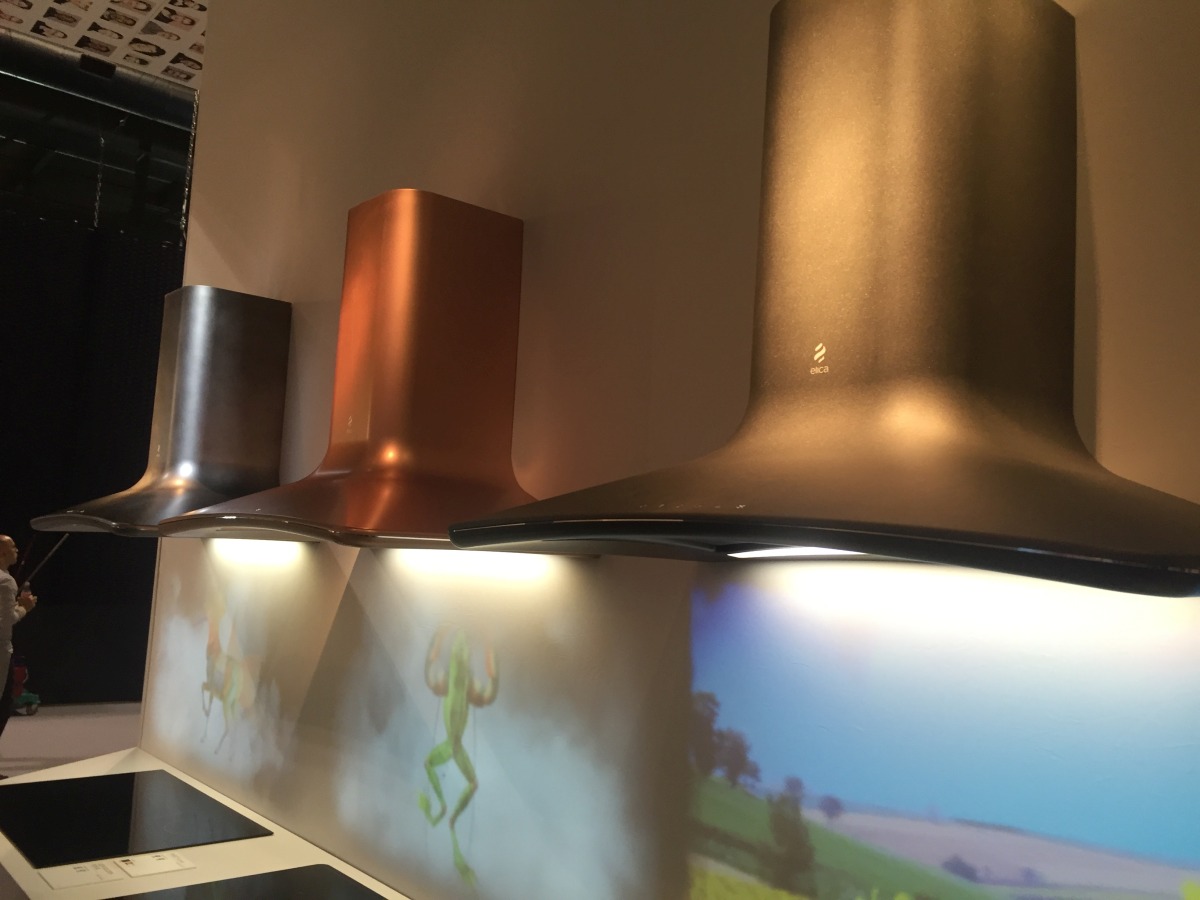
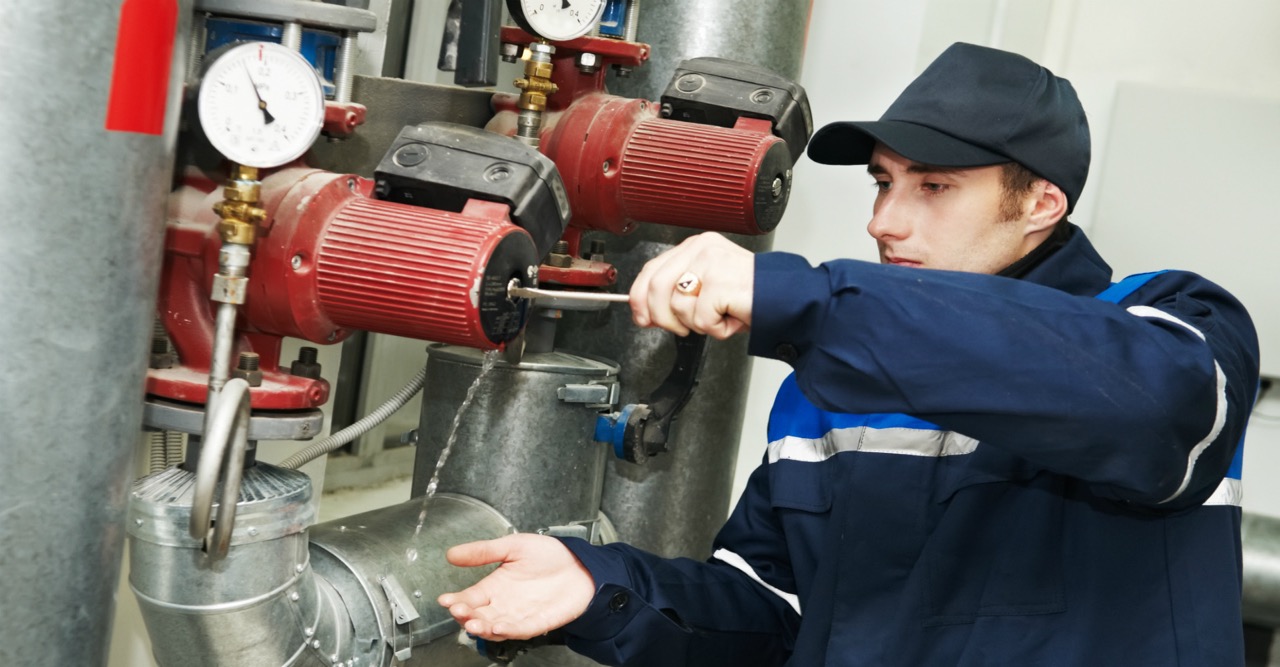
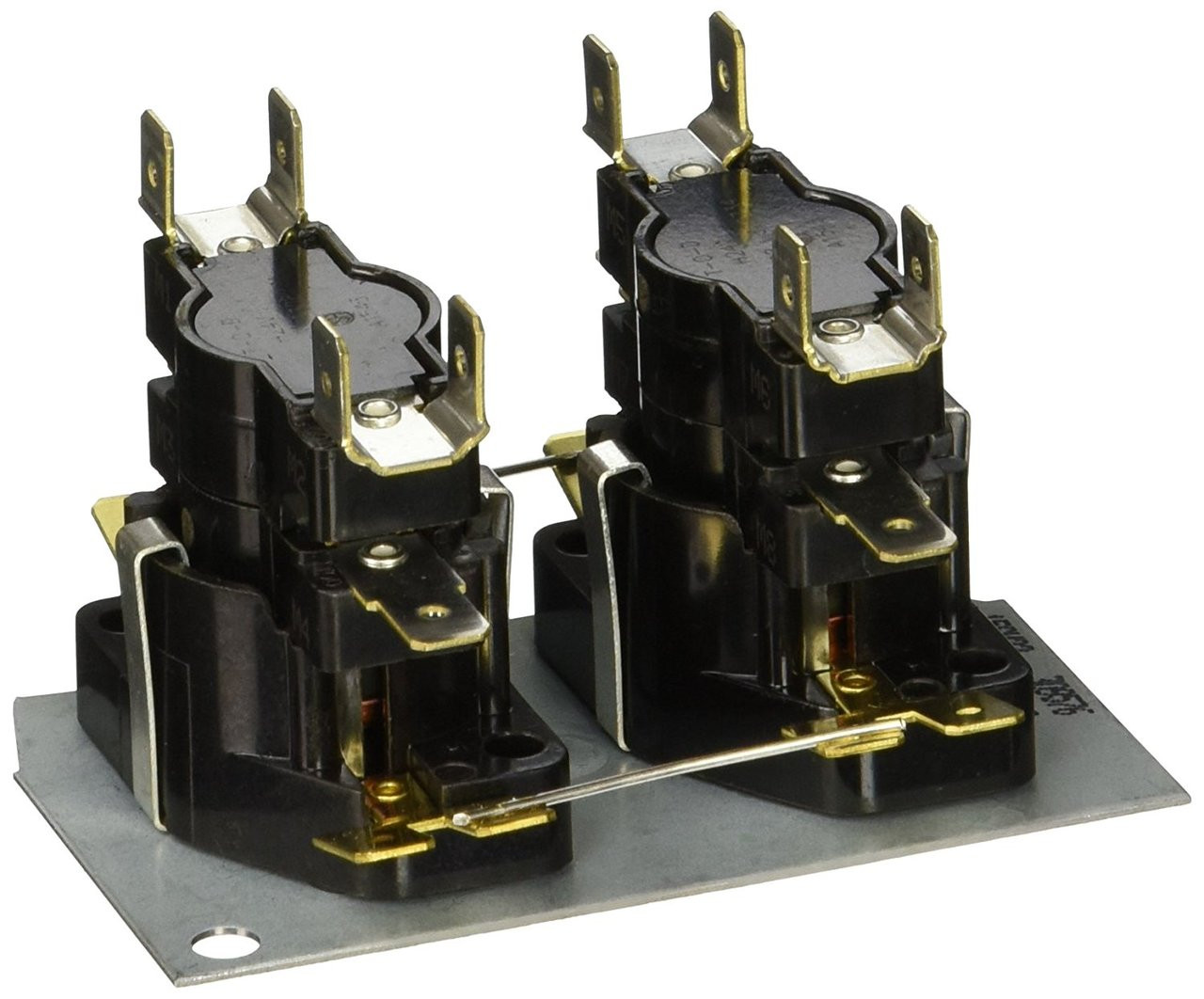
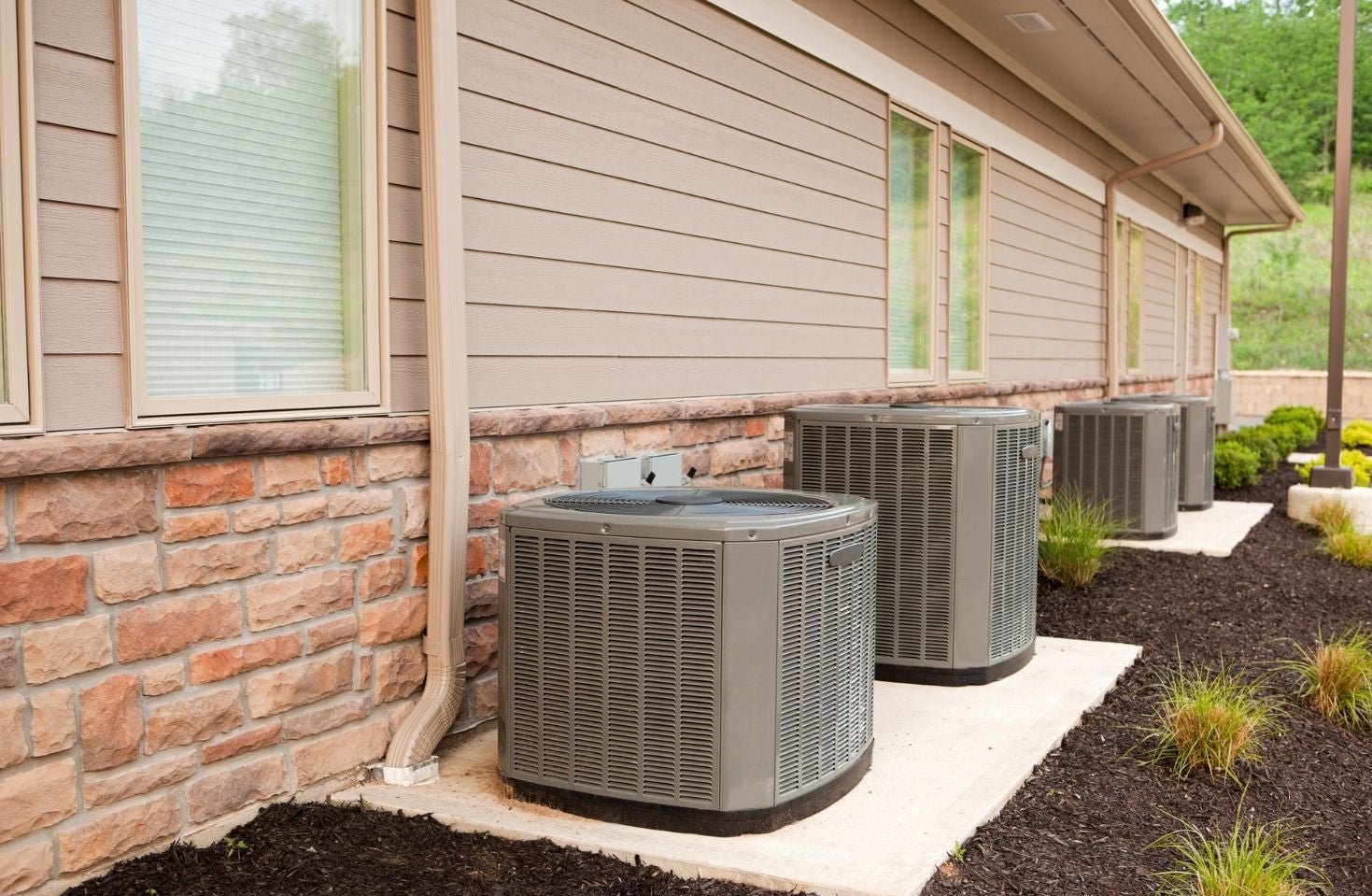
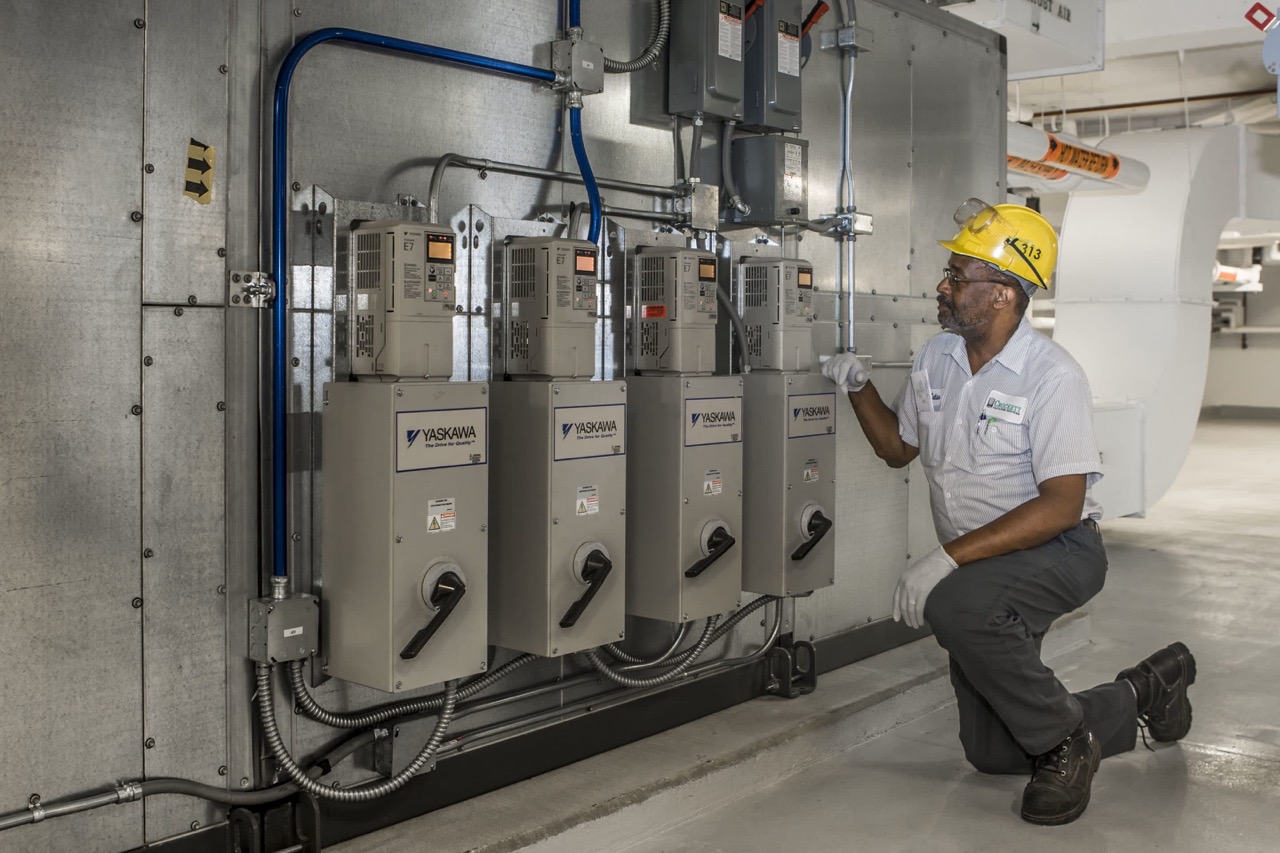
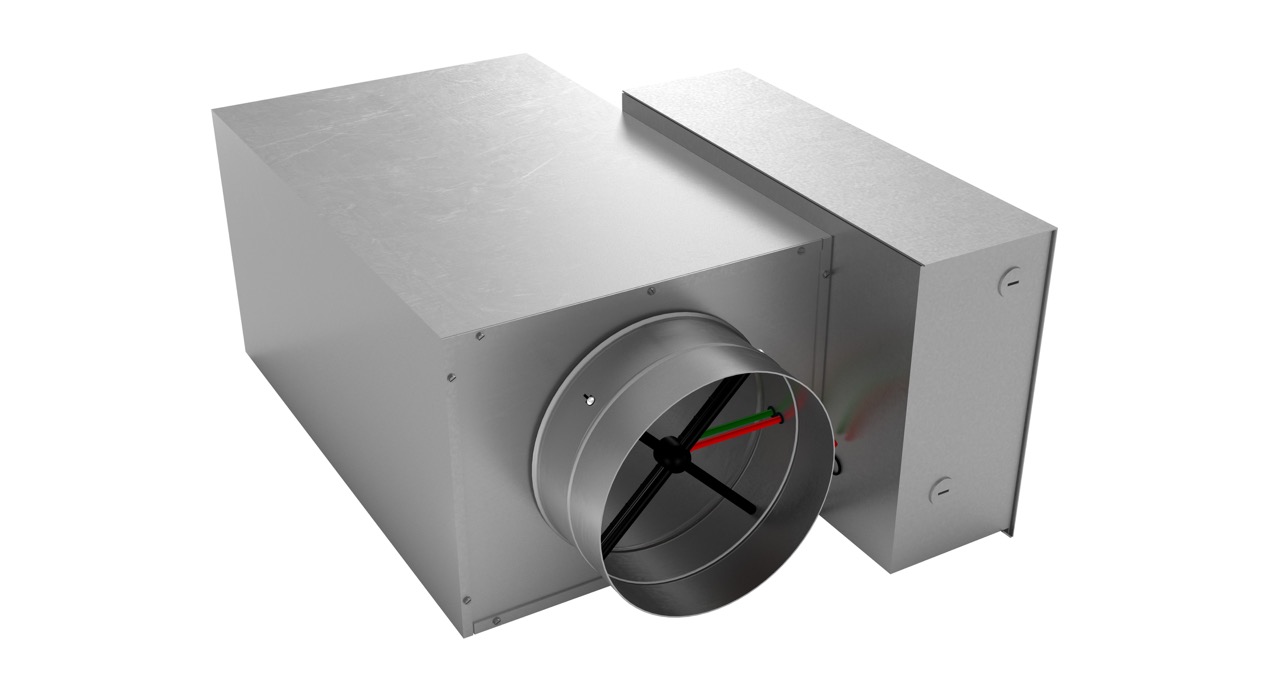

0 thoughts on “What Is HVAC Ductwork”